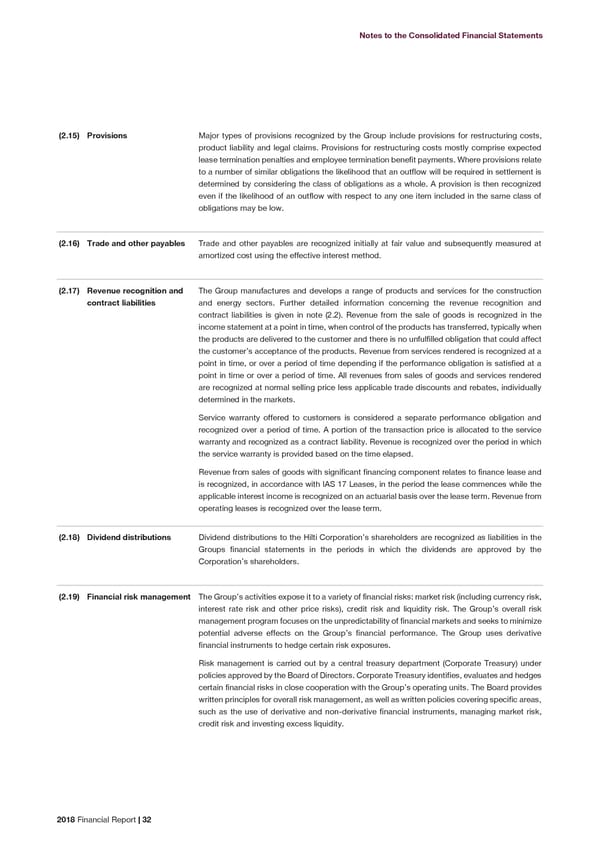Notes to the Consolidated Financial Statements (2.15) Provisions Major types of provisions recognized by the Group include provisions for restructuring costs, product liability and legal claims. Provisions for restructuring costs mostly comprise expected lease termination penalties and employee termination benefit payments. Where provisions relate to a number of similar obligations the likelihood that an outflow will be required in settlement is determined by considering the class of obligations as a whole. A provision is then recognized even if the likelihood of an outflow with respect to any one item included in the same class of obligations may be low. (2.16) Trade and other payables Trade and other payables are recognized initially at fair value and subsequently measured at amortized cost using the effective interest method. (2.17) Revenue recognition and The Group manufactures and develops a range of products and services for the construction contract liabilities and energy sectors. Further detailed information concerning the revenue recognition and contract liabilities is given in note (2.2). Revenue from the sale of goods is recognized in the income statement at a point in time, when control of the products has transferred, typically when the products are delivered to the customer and there is no unfulfilled obligation that could affect the customer’s acceptance of the products. Revenue from services rendered is recognized at a point in time, or over a period of time depending if the performance obligation is satisfied at a point in time or over a period of time. All revenues from sales of goods and services rendered are recognized at normal selling price less applicable trade discounts and rebates, individually determined in the markets. Service warranty offered to customers is considered a separate performance obligation and recognized over a period of time. A portion of the transaction price is allocated to the service warranty and recognized as a contract liability. Revenue is recognized over the period in which the service warranty is provided based on the time elapsed. Revenue from sales of goods with significant financing component relates to finance lease and is recognized, in accordance with IAS 17 Leases, in the period the lease commences while the applicable interest income is recognized on an actuarial basis over the lease term. Revenue from operating leases is recognized over the lease term. (2.18) Dividend distributions Dividend distributions to the Hilti Corporation’s shareholders are recognized as liabilities in the Groups financial statements in the periods in which the dividends are approved by the Corporation’s shareholders. (2.19) Financial risk management The Group’s activities expose it to a variety of financial risks: market risk (including currency risk, interest rate risk and other price risks), credit risk and liquidity risk. The Group’s overall risk management program focuses on the unpredictability of financial markets and seeks to minimize potential adverse effects on the Group’s financial performance. The Group uses derivative financial instruments to hedge certain risk exposures. Risk management is carried out by a central treasury department (Corporate Treasury) under policies approved by the Board of Directors. Corporate Treasury identifies, evaluates and hedges certain financial risks in close cooperation with the Group’s operating units. The Board provides written principles for overall risk management, as well as written policies covering specific areas, such as the use of derivative and non-derivative financial instruments, managing market risk, credit risk and investing excess liquidity. 2018 Financial Report | 32
 2018 Financial Report Page 33 Page 35
2018 Financial Report Page 33 Page 35